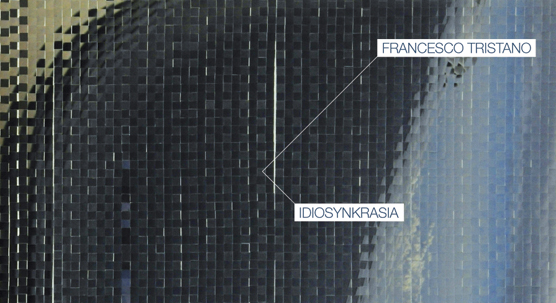FRANCESCO TRISTANO
bachCage
Deutsche Grammophon / Universal
Release date: March 2011

the differences between Johann Sebastian Bach and John Cage are obvious. They are so obvious that you could be tempted to think that Tristano consciously decided on a high-contrast album programme. Which is certainly true to an extent. Only in the case of bachCage, the artist wasn’t out for provocation just for the sake of it. In fact, this album begins to unfold only at the second and third glance. In the foreground is Tristano’s idiosyncratic and very personal handling of his musical pioneers, Bach and Cage. In all of his precise interpretation of Bach, the music is very much alive and sounds conspicuously wiry and percussive. Probably in part due to the recording’s metallic, occasionally tough sound. Production partner Moritz von Oswald’s involvement becomes even more apparent in Tristano’s Cage recordings. Preparation of the instrument has given way to post-processing aided by studio technology subtly added by Von Oswald and Tristano. And so, the sound of Tristano’s dreamy interpretation of John Cage’s In a Landscape brings to mind distant Gamelan music echoes. The interludes by Tristano himself have a fey and disembodied effect due to the targeted use of reverb effects, and – thanks to filter technology – the final Bach Menuet II from French Suite no. 1 features the sound of a musical clock.
Another, deeper aspect comes to bear on this album, because his subjective choice of pieces sees Francesco Tristano organically blend Bach and Cage, blurring borders while emphasising shared elements. One of these being that both masters are connected by a mathematically oriented approach to composition. Tristano’s selection of pieces and their sequence, some of which has been tested in a live context, are based on tonal convergence, on cyclical structures and their polyphonic construction as duets. Tristano has also found spiritual common ground in both composers, which he conveys through his own compositions.
Perhaps Tristano is one of the first representatives of a new generation of musicians who no longer belong to a specific school. This generation also takes advantage of the fact that practically the whole repertoire of all music ever recorded is available on the Internet. The most diverse kinds of music stand alongside each other, taken out of their typical context and available in some would say, a more democratic form. Tristano makes use of this, stamping his mark on the world of music and providing a fresh and unique sound, unlike anything that has been heard before.
bachCage Track Listing.
1 Tristano Introit
Johann Sebastian Bach Partita n. 1 in Bb major, BWV 825
2 Praeludium
3 Allemande
4 Courante
5 Sarabande
6 Menuet I
7 Menuet II – Menuet I da capo
8 Gigue
9 John Cage In a Landscape (1948) (Ed. Peters)
John Cage The Seasons (1947) (Ed. Peters)
10 Prelude I
11 Winter
12 Prelude II
13 Spring
14 Prelude III
15 Summer
16 Prelude IV
17 Fall
18 Finale (Prelude I)
Johann Sebastian Bach Vier Duette 802-805
19 Duett n. 1 in E minor, BWV 802
20 Duett n. 2 in F major, BWV 803
21 Duett n. 3 in G major, BWV 804
22 Duett n. 4 in A minor, BWV 805
23 John Cage Etude Australe n Duett n. VIII, Book I (1974-75) (Ed. Peters)
24 Tristano Interludes
25 JS Bach Menuet II from French Suite n. 1, BWV 812
bachCage European tour.
27.2. 2011
Hamburg, Laeiszhalle
“bachCage”
11.4.2011
München, Allerheiligen Hofkirche
“bachCage”
12.4.2011
Frankfurt, Cocoon Club
Yellow Lounge – presenting “bachCage”
27.4.2011
Berlin, Radialsystem
“bachCage”
28.4.2011
Dresden, Yellow Lounge
presenting “bachCage”
8.5.2011
Wien, Konzerthaus
“bachCage”
9.5.2011
Klavierfestival Ruhr, Bottrop
“bachCage”
13.5.20011
Leipzig, Central Theater
“bachCage
10.9. 2011
Festspiele Mecklenburg Vorpommern
“bachCage”
